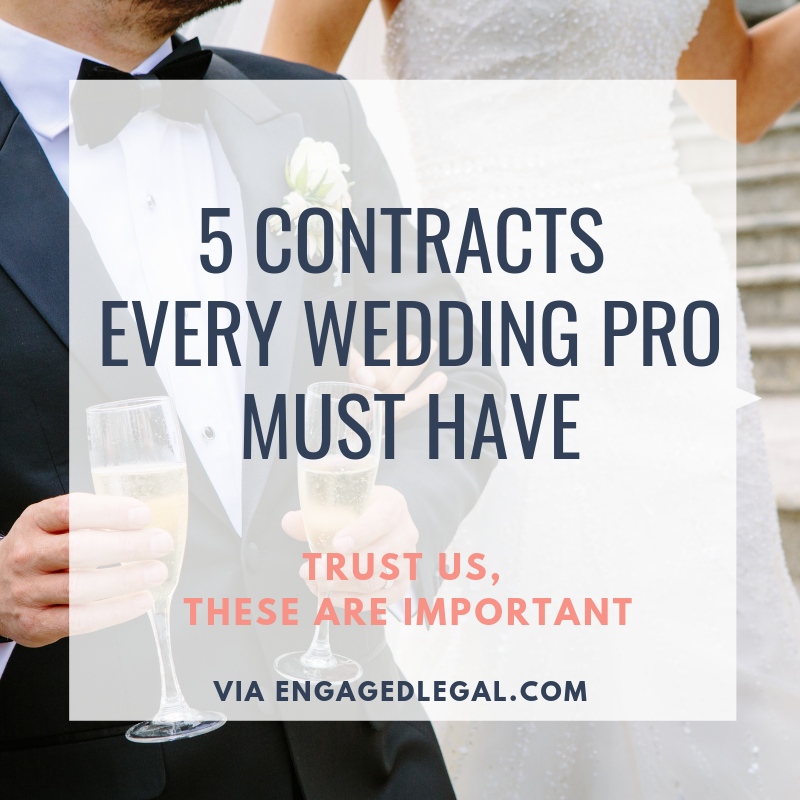Negotiate Like A Pro - Tried and True Tips for Negotiating Contracts with Confidence
/Every business owner has to negotiate a contract at some point. Whether it’s with a client who is asking for changes in your terms, negotiating through a vendor contract, or creating the terms to a collaboration agreement, knowing how to advocate for yourself is critical.
But guess what? Being your own advocate can be HARD. I will be the FIRST ONE to admit that while I am a great negotiator for others (like, I won an award for it in law school once, #nerdalert) I used to be terrible at advocating for myself. Like that whole “get-kinda-sweaty-and-act-all-fuzzy-brained” kind of feeling where your heart beats really fast and you wonder if everyone hates you.
It’s that “thing” where you will never speak up and send your own meal back to the kitchen when the waitress gets it wrong, but you sure as HECK will say something if your friend’s meal isn’t perfect!
But part of being a business owner is being your own advocate. You have to be able to ask for more, push for more money, and generally not let yourself get used as a doormat.
So how do we get around feeling like you’re going to faint every time you walk into a negotiation?
I implemented the following “steps” in my negotiation process, and they’ve helped me overcome much of the fear and anxiety related to negotiations. So whether its for you or for a client, here’s what WORKS:
Figure out what you actually want.
So many times we aren’t even sure what we’re working towards. Without a clear goal in mind, it’s very easy to get lost in the weeds. Identify your "Wants” and “Must Haves” from the get go to keep your eye on the prize.
Is money the most important aspect right now? That’s FINE, and that’s why people start businesses. Figure out how much money you need to make this project “worth it” to you. Are you venturing into a new service area and want to perfect your skills? Figure out a way to make this deal work for you so you can learn and grow.
Everyone’s “wants” and “needs” are different— so start by identifying yours. Remember: the feet go where the eyes are looking!
Identify some intangibles
When I say “Intangibles,” am mostly talking about non-monetary solutions. Everyone wants more money. And while money is critical to oh, LIVING, you have to be open to additional “value adds,” which may not be dollars (Side note: never work solely for exposure. That’s not smart. Unless it’s for like, Taylor Swift or something, and then….. maybe.).
Push for dollars, but also get creative and look at the ways you and the other party to the contract can collaborate, help each other, or modify your arrangement if money simply isn’t an option. Can you get a photographer to take photos for your brand? A web person to fix those wonky SEO issues on your website? Think about trading time and products when money is a no-go.
Present three options.
Here’s a secret. THREE is a MAGIC NUMBER.
It makes people think feel like they have more control over their options. And when people don’t feel backed into a corner, they are much more likely to work through a compromise.
Research studies have found that in advertisements, speeches and other messages designed to have a persuasive effect, three claims will persuade, but four or more will trigger skepticism - and may even reverse initially positive impressions!
So in regards to negotiation and persuasion, presenting a group of three options is the way to go.
Spelling and Grammar are IMPORTANT.
This should go without saying, but if you send a great offer full of typos, the other side will think less of you than if you sent a polished product. While typos won’t necessarily ruin a deal, they definitely don’t instill trust or a sense of value to the person on the other side of the table.
Keep it simple.
Remember your end goal, and don’t get lost in the weeds.
Especially when it comes to large deals with lots of moving parts, getting lost in the details can seem inevitable.
But those little detours can ultimately end up derailing a deal with an ideal client.
For example:
“We’ll design flower crowns for $30 dollars per person. But if it goes above 200 people, then the pricing will be $25 dollars per person. And if those people bring friends, we can do the friends for $28 per person. And then there will be a discount code, so if that gets added in, we’ll do them for $25 per person only. And if we get emails after the event with referred customers, then we will do the flower crowns for $35 per person. And all of your marketing will have our name on it. And then we’ll add you as an affiliate after 100 days post-event. And if anyone buys our online course for 30 days after the workshop using your code, you’ll get a $5 commission.”
UMMM WHAT? Why are there so many numbers?! This deal is about flower crowns, not the crown jewels. I’ve sold companies with less hassle than this!
Having to negotiate these tiny details i) takes forever, and ii) can make your head spin. Keep details as simple as you can to keep the negotiations moving. No one wants to lose a potential client because they are too confused by your pricing— and therefore go with the path of least resistance (another vendor!).
Above all, just remember that person on the other side of the table— whether they are Taylor Swift or Taylor-from-your-hometown, are just people. Have confidence in yourself and the quality of what you provide. If you do everything with heart, you can’t fail.



















